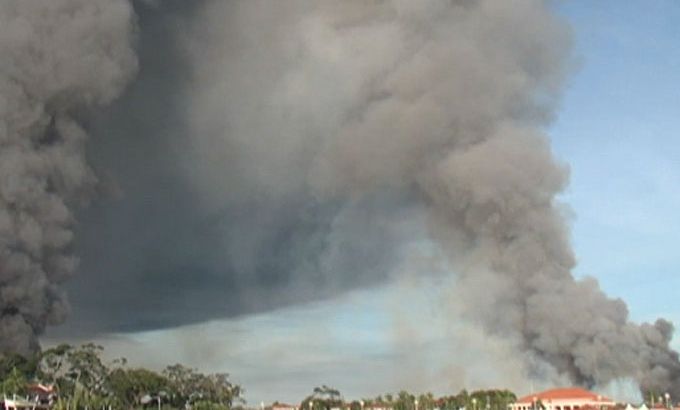Philippine troops surround rebel-held areas
Fighting in Zamboanga City enters seventh day despite attempts at ceasefire with Muslim rebels who are holding hostages.

Fighting in the southern Philippine city of Zamboanga has entered a seventh day despite attempts at a ceasefire, as the Philippine troops lay siege to rebel positions.
Thousands of government troops on Saturday started attack against Muslim rebels, who are still holding a number of hostages, to end the standoff that has left at least 56 people dead.
Mar Roxas, the interior secretary, said on Saturday that about 3,000 government troops had surrounded about 200 fighters from the Moro National Liberation Front (MNLF) and were retaking rebel-held areas and villages around the coastal city.
He also added that police estimated the MNLF gunmen were now holding as few as seven civilian hostages in Zamboanga, compared to more than 100 a day earlier.
The operation came after efforts to agree a ceasefire ended in failure. Roxas said the government forces had so far contained and constricted the rebel fighters. “Now it is into clearing.”
President Benigno Aquino III said more firefights were expected but assured thousands of displaced villagers in Zamboanga that “these problems of ours are dwindling”, and the crisis would soon be over.
Al Jazeera’s Jamela Alindogan, reporting from Zamboanga City, said: “Up to now, the details on the ground remain sketchy.”
“There are text messages, peace observers have shown to me, from a hostage who said that the military has been directly or indirectly hitting civilians and hostages in between,” she said.
“What we know is, there are some 180 MLNF fighters and unknown number of hostages in the area, while human rights observers are trying to at least have a chance to get in and offer aid and medical assistance to the affected.”
Thousands displaced
Aside from those killed, dozens have been wounded and more than 69,000 people displaced since fighting began on Monday, and hundreds of homes and a hospital have been razed.
Late on Friday, the vice president Jejomar Binay said he had spoken by telephone to Nur Misuari, the leader the rebels, and they had agreed a ceasefire and talks to resolve the latest conflict.
The ceasefire was tentatively scheduled to go into effect at midnight (4pm GMT) on Saturday, a spokesman for the vice president said. However, Abigail Valte, a presidential spokeswoman, said it was never implemented and claimed the rebels had launched fresh attacks.
Lieutenant-Colonel Ramon Zagala, an amy spokesman, said the military was unaware of any ceasefire. “We have not received any order. We continue our operations until we are told otherwise,” he said.
Independence war
The MNLF waged a 25-year war for independence before signing a peace treaty in 1996 that granted limited self-rule to the south’s Muslim minority.
Misuari, who has accused the government of violating the terms of a 1996 treaty by negotiating a separate deal with a rival faction, had disappeared from public view shortly before the fighting began Monday.
The rival faction, the Moro Islamic Liberation Front (MILF), is in the final stages of peace talks with Manila and is expected to take over an expanded autonomous Muslim region in the south by 2016.
President Aquino said the peace talks with the MILF aimed to end decades of rebellion that had claimed 150,000 lives in the country’s Muslim southern regions.